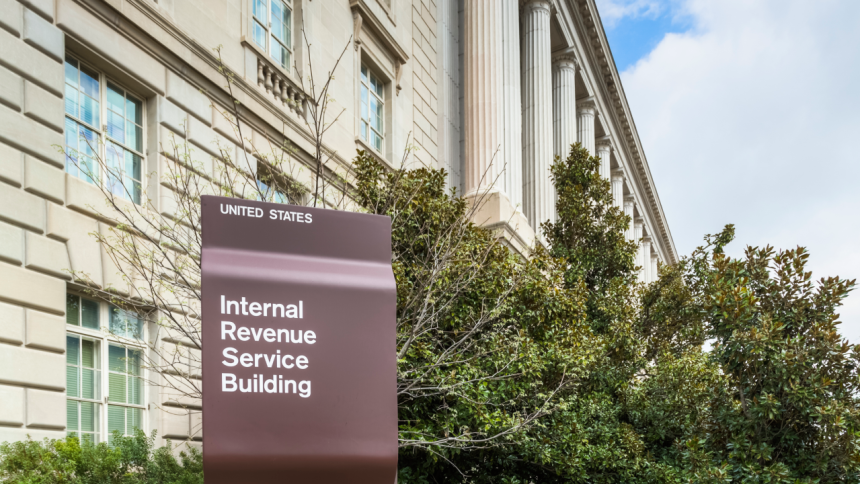The IRS Direct File program, which lets taxpayers file their federal income tax return directly with the IRS for free, is doubling its reach to 24 states for the 2025 tax season, up from 12 states in 2024, the program’s pilot year.
The Direct File program will also accept more types of tax situations for the 2025 tax season. While taxpayers who used the system in 2024 could claim a handful of tax credits, including the earned income tax credit and the child tax credit, that list is expanding in 2025 to include the child and dependent care credit, among others.
An estimated 30 million taxpayers will qualify for the Direct File program in 2025, the IRS says. More than 140,000 taxpayers filed their federal tax returns through the Direct File program in 2024. About 90% of users said their experience was excellent or above average, according to a survey of about 11,000 Direct File users in 2024, conducted by the General Services Administration.
“We’re excited about the improvements to Direct File and the millions more taxpayers who will be eligible to use the service this year,” said Danny Werfel, the IRS commissioner, in a statement. “Our goal is to improve the experience of tax filing itself and help taxpayers meet their obligations quickly and easily.”
The IRS says that taxpayers can use Direct File when the 2025 tax season kicks off in January, and it will be available until Oct. 15, 2025. But the program’s future is somewhat unclear: In December, 29 Republican lawmakers sent a letter to President-elect Donald Trump, calling for him to end the Direct File program on his first day in office. Lawmakers in the U.S. House of Representatives also introduced legislation in July to end the Direct File program.
For now, here’s what you need to know about how the IRS Direct File program works, and how to qualify for it.
What is IRS Direct File?
The Direct File program is a new initiative, about to enter its second year, that allows taxpayers to file their federal tax returns electronically with the IRS. The no-cost tool guides taxpayers through every part of their federal income tax return. Taxpayers can file using a smartphone, computer or tablet.
One of the program’s advantages is that, if you have questions as you’re working on your return, you can get live support directly from the IRS via chat or phone. IRS representatives can answer basic tax questions and help with technical issues in English and Spanish.
Who qualifies for IRS Direct File?
The Direct File program has income limits, as well as limits on the types of income, deductions and credits you can enter on your tax return.
Income limits
For the 2025 tax season:
- Your income must be less than $200,000 (less than $168,600 if you have more than one employer), and if you’re married filing jointly, your spouse’s income also must fall below these limits.
- If you’re married filing jointly, your combined income must be less than $250,000.
- If you’re married and file separately from your spouse, your income must be less than $125,000.
Types of income
To be eligible for Direct File, your income can come from the following sources:
- W-2 wages
- Social Security income
- Unemployment compensation
- Interest income
- Retirement income (reported on a 1099-R — limited eligibility starts March 2025)
But if you’re self-employed, or have business or rental income, you can’t use Direct File. Same goes for IRA contributions or distributions: If you have either, you can’t use Direct File.
Tax deductions
You can use the IRS Direct File program only if you claim the standard deduction — the program isn’t available to people who itemize. But you can claim certain above-the-line deductions: student loan interest, educator expenses and health savings account contributions.
You can’t use Direct File if you want to deduct your IRA contributions.
Tax credits
The Direct File program allows for the following tax credits in 2025:
- Earned income tax credit
- Child tax credit
- Credit for other dependents
- Child and dependent care credit
- Premium tax credit
- Credit for the elderly or disabled
- Retirement savings contribution credit
However, if you want to claim education credits, credits for energy efficient home upgrades or the adoption expense credit, you can’t use the Direct File program.
Which states offer IRS Direct File?
More taxpayers will have access to the IRS Direct File program in 2025. In 2024, the IRS kicked off the program with only 12 states; that number has expanded to 24 states for the 2025 tax season.
For some of the states that participate in the IRS Direct File program, your federal return information will be transferred automatically to the state tax website, but in some cases you’ll have to re-enter your information. Visit this IRS Direct File page to get the details for your state.
Here is a list of the participating states:
- Alaska
- Arizona
- California
- Connecticut
- Florida
- Idaho
- Kansas
- Maine
- Maryland
- Massachusetts
- Nevada
- New Hampshire
- New Jersey
- New Mexico
- New York
- North Carolina
- Oregon
- Pennsylvania
- South Dakota
- Tennessee
- Texas
- Washington State
- Wisconsin
- Wyoming
What if you’re not eligible to use Direct File?
If you don’t qualify for the IRS Direct File program, you may have other options to file your tax return for free.
In addition to Direct File, the IRS offers the Free File program, in which it partners with online tax software providers to provide free federal income tax return filing. Some providers also allow you to file a state income tax return.
For the 2024 tax season, your adjusted gross income had to be less than $79,000 to qualify for the Free File program. That dollar threshold is likely to rise slightly for the 2025 tax season.
The IRS also offers the Volunteer Income Tax Assistance (VITA) program, which provides certified volunteers to prepare basic tax returns if you earn less than $67,000 a year, are disabled, or speak limited English. You can find a site near you by visiting this IRS page.
Read the full article here














